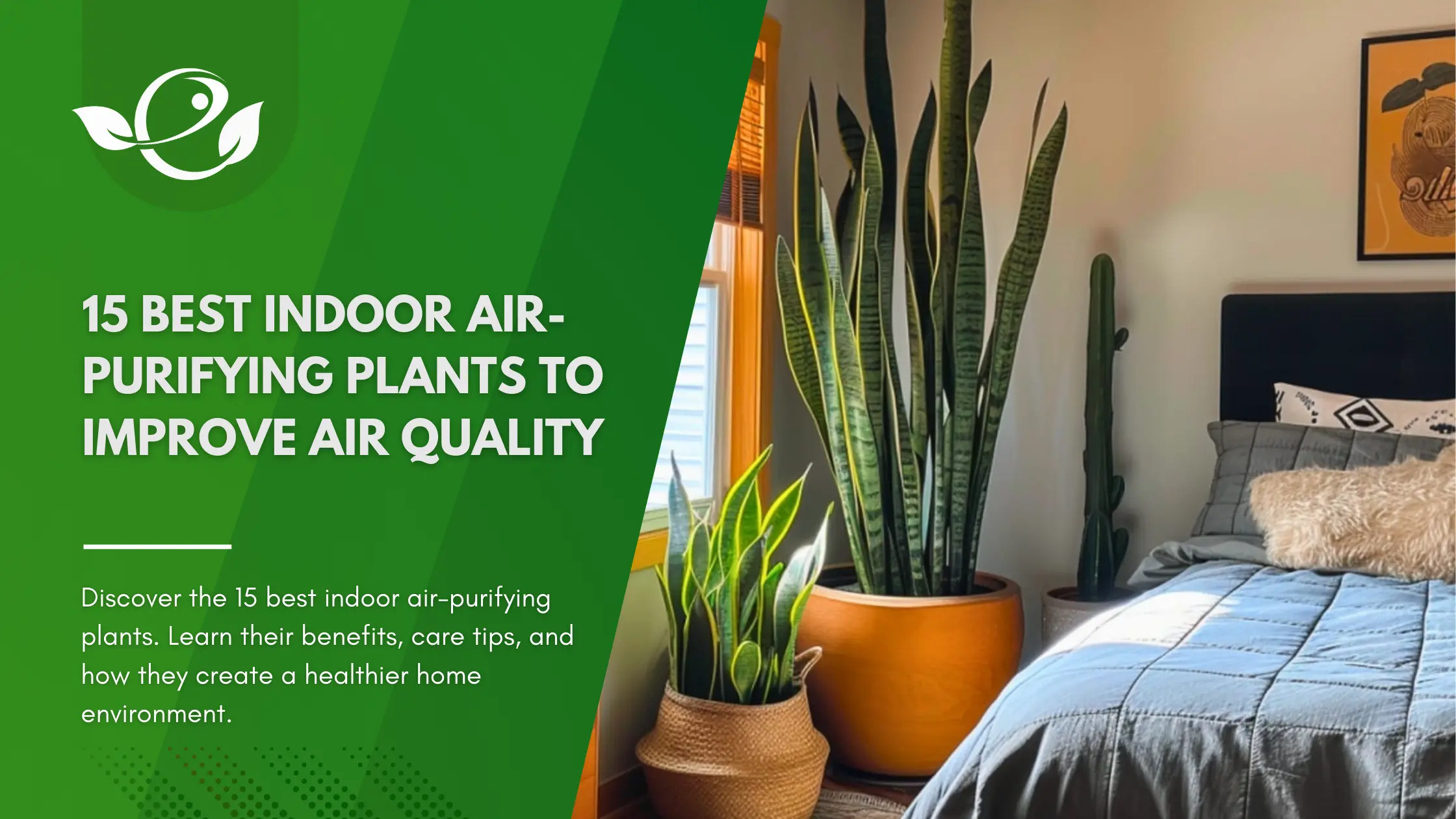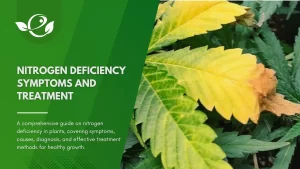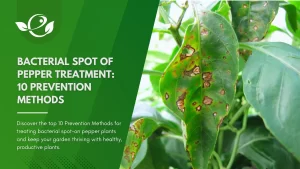Imagine stepping into a space where every breath feels refreshing and pure as if you’re inhaling the crisp air of a forest after the rain. Such an environment is not a distant dream but a possibility you can create within the walls of your own home. In today’s world, where urban pollution and poor indoor air quality have become significant concerns, bringing nature indoors has more benefits than just aesthetic appeal.
Breathing clean, fresh air is essential for a healthy life, but indoor spaces often have pollutants we can’t see. That’s where air-purifying plants come in. These natural wonders not only add beauty to your home but also work tirelessly to filter out toxins and improve air quality. By bringing these green companions indoors, you can create a healthier, more vibrant living environment that’s free from harmful chemicals.
NASA’s Clean Air Study has provided solid evidence that certain houseplants possess the incredible ability to filter out harmful chemicals like formaldehyde, benzene, and trichloroethylene. By incorporating these green companions into your home decor, you’re not only enhancing your interior’s ambience but also boosting your overall well-being. Whether you have a green thumb or are new to plant care, there are a variety of low-maintenance plants that can thrive in your living space while purifying the air. Let’s explore the best indoor air-purifying plants that can transform your home into a healthier, more breathable oasis.
How Indoor Plants Improve Air Quality
Indoor plants do more than just add a touch of greenery to your living space; they actively participate in the purification of the air around them. Through the process of photosynthesis, plants absorb carbon dioxide and release oxygen. However, certain plants go a step further by absorbing airborne toxins through their leaves, converting these pollutants into nutrients at the root level.
These natural air purifiers can effectively remove volatile organic compounds (VOCs) such as formaldehyde, benzene, xylene, toluene, and trichloroethylene from the air. VOCs are commonly found in household products like paints, cleaners, and even furniture. By filtering these pollutants, indoor plants help to create a cleaner, healthier environment in your home.
Benefits of Having Indoor Air-Purifying Plants
- Improved Air Quality: Plants act as natural filters that absorb harmful toxins, significantly enhancing indoor air quality.
- Enhanced Mood and Mental Health: Studies have shown that greenery reduces stress levels and promotes a sense of calm and relaxation.
- Increased Productivity: Being around nature-inspired elements can improve focus, concentration, and creativity, making them ideal for home offices.
- Natural Humidifiers: Certain plants release moisture into the air, which can help alleviate dryness in your living space.
- Aesthetic Appeal: Indoor plants serve as a stylish addition to home decor, adding life and vibrancy to any room.
Top 15 Best Indoor Air-Purifying Plants
Below, we present the best indoor plants that purify the air. Each plant is carefully chosen for its ability to improve air quality, along with its care requirements and unique characteristics.
1. Spider Plant (Chlorophytum comosum)
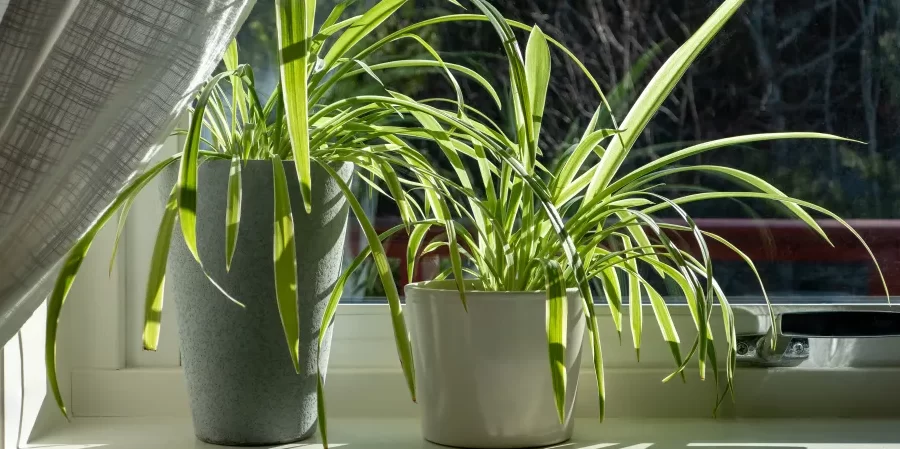
- Air-Purifying Properties: Known for its effectiveness in removing formaldehyde and xylene, this plant is a powerhouse of air purification.
- Description: The Spider Plant is a resilient, easy-to-care-for plant with slender, arching leaves. It produces small white flowers and is well-suited to both hanging baskets and pots.
- Care Tips: Prefers bright, indirect light and moderate watering. It thrives in a well-draining potting mix.
2. Snake Plant (Sansevieria trifasciata)

- Air-Purifying Properties: Filters out toxins like benzene, formaldehyde, xylene, and toluene, making it a must-have for improving indoor air.
- Description: Also known as “mother-in-law’s tongue,” it features upright, sword-like leaves that are highly tolerant to low light and irregular watering.
- Care Tips: This plant requires minimal maintenance. It thrives in low to bright indirect light and prefers to be watered sparingly.
3. Peace Lily (Spathiphyllum)
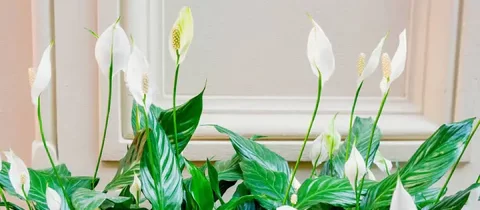
- Air-Purifying Properties: Highly effective in removing ammonia, benzene, formaldehyde, and trichloroethylene.
- Description: With its beautiful white blooms and glossy green leaves, the Peace Lily is both an air-purifier and a stunning decorative plant.
- Care Tips: Needs indirect light and consistently moist soil. It enjoys a slightly humid environment, making it ideal for bathrooms.
4. Aloe Vera (Aloe barbadensis miller)
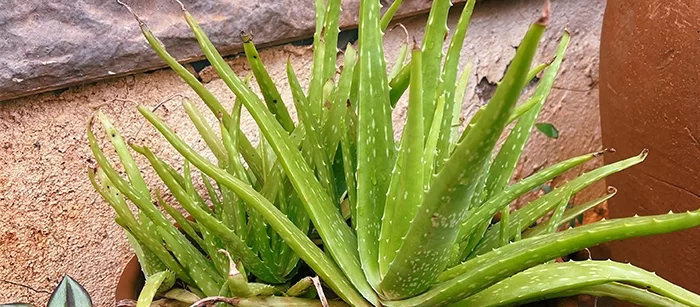
- Air-Purifying Properties: Absorbs harmful chemicals like formaldehyde and benzene, which are often found in cleaning products.
- Description: Aloe Vera is a succulent plant with thick, fleshy leaves that store water. It’s also well-known for its soothing gel used in skin care.
- Care Tips: Prefers bright light and minimal watering. Let the soil dry out completely before re-watering.
5. Boston Fern (Nephrolepis exaltata)
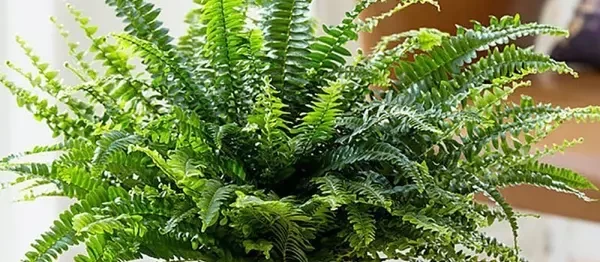
- Air-Purifying Properties: Removes formaldehyde and xylene effectively, improving the humidity in the room.
- Description: This fern is characterized by its feathery fronds and lush appearance, making it a popular choice for hanging baskets.
- Care Tips: It loves humidity and indirect light. Keep the soil moist but not waterlogged for best growth.
6. Areca Palm (Dypsis lutescens)

- Air-Purifying Properties: Eliminates common indoor pollutants like formaldehyde, xylene, and toluene.
- Description: The Areca Palm, with its tall, feathery fronds, acts as a natural humidifier and is perfect for living rooms.
- Care Tips: Thrives in bright, indirect light and requires the soil to be kept lightly moist.
7. Rubber Plant (Ficus elastica)
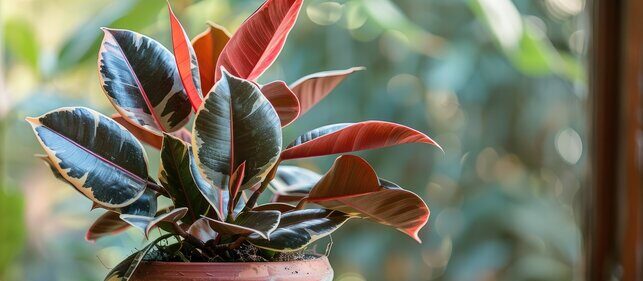
- Air-Purifying Properties: Known to remove toxins like formaldehyde from the air.
- Description: This plant has thick, shiny leaves that can add a touch of elegance to any space.
- Care Tips: Prefers bright, indirect light and moderate watering. Allow the top layer of soil to dry out between waterings.
8. English Ivy (Hedera helix)
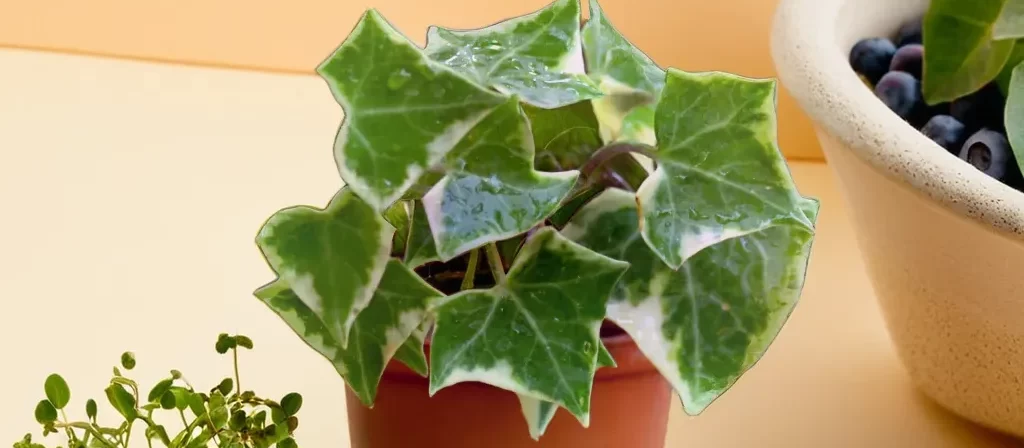
- Air-Purifying Properties: Effective in removing formaldehyde, benzene, xylene, and toluene.
- Description: English Ivy is a versatile plant that can be grown in hanging baskets or as a trailing plant.
- Care Tips: Requires indirect light and regular watering. It can tolerate various light conditions but prefers moderate light for optimal growth.
9. Philodendron (Philodendron spp.)
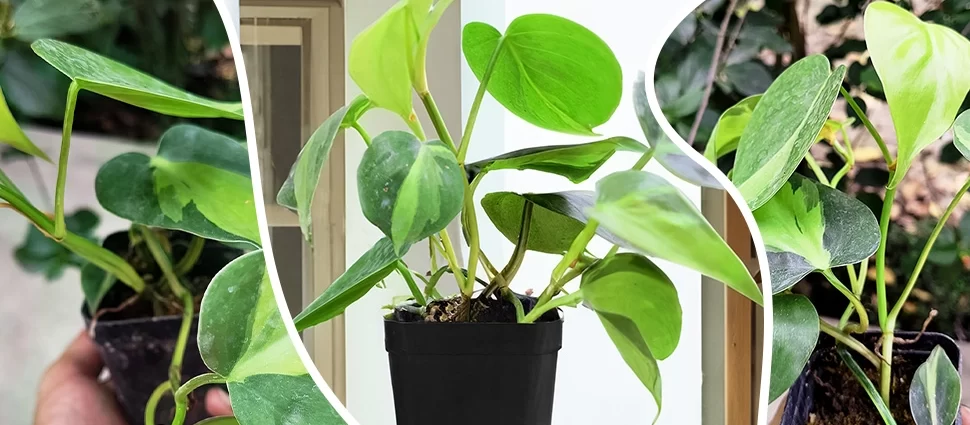
- Air-Purifying Properties: Great at removing formaldehyde from the air.
- Description: With its heart-shaped leaves, the Philodendron is a popular houseplant that’s easy to care for.
- Care Tips: Thrives in low to medium light and enjoys evenly moist soil.
10. Dracaena (Dracaena marginata)
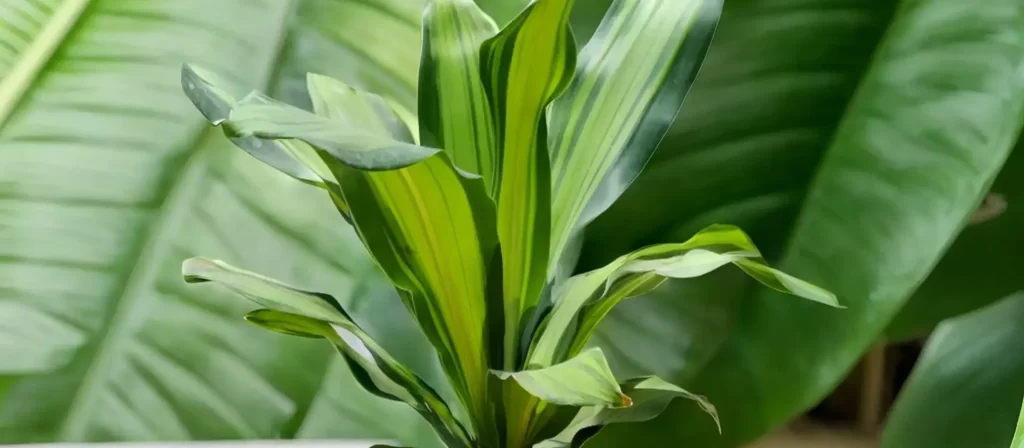
- Air-Purifying Properties: Filters out benzene, formaldehyde, trichloroethylene, and xylene.
- Description: This plant has long, narrow leaves that make a bold statement in any room.
- Care Tips: Requires indirect light and should be watered when the top inch of soil is dry.
11. Bamboo Palm (Chamaedorea seifrizii)
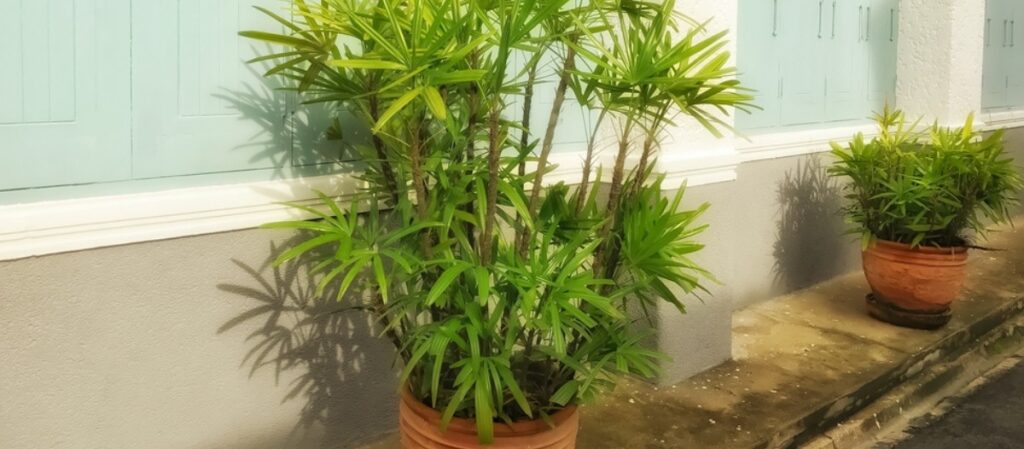
- Air-Purifying Properties: Effective in eliminating benzene, formaldehyde, and trichloroethylene.
- Description: The Bamboo Palm has a graceful appearance with its clusters of feathery fronds.
- Care Tips: Prefers indirect light and consistently moist soil. It does well in humid conditions.
12. Golden Pothos (Epipremnum aureum)
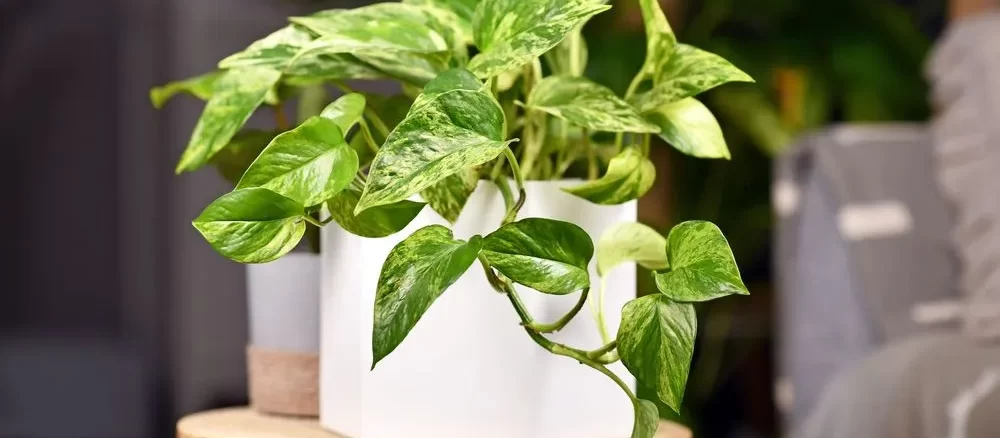
- Air-Purifying Properties: Absorbs formaldehyde, benzene, and toluene from the air.
- Description: This fast-growing vine has heart-shaped leaves with a beautiful variegated pattern.
- Care Tips: Thrives in low to bright indirect light and should be watered when the soil is dry.
13. Chinese Evergreen (Aglaonema)
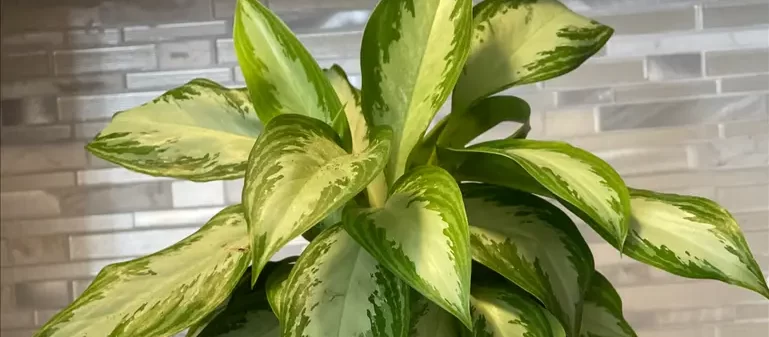
- Air-Purifying Properties: Filters toxins like benzene and formaldehyde.
- Description: With its striking foliage, the Chinese Evergreen is an attractive and hardy plant.
- Care Tips: It tolerates low light conditions and prefers the soil to dry out slightly between waterings.
14. Weeping Fig (Ficus benjamina)
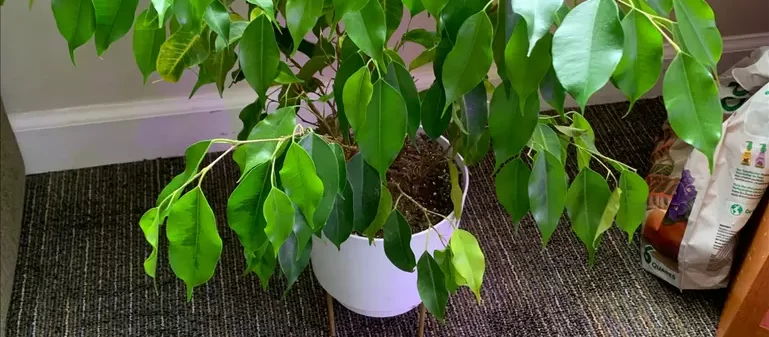
- Air-Purifying Properties: Excellent for removing formaldehyde, xylene, and toluene.
- Description: This bushy, tree-like plant adds elegance and greenery to any room.
- Care Tips: Prefers bright, indirect light and regular watering to keep the soil moist.
15. Gerbera Daisy (Gerbera jamesonii)
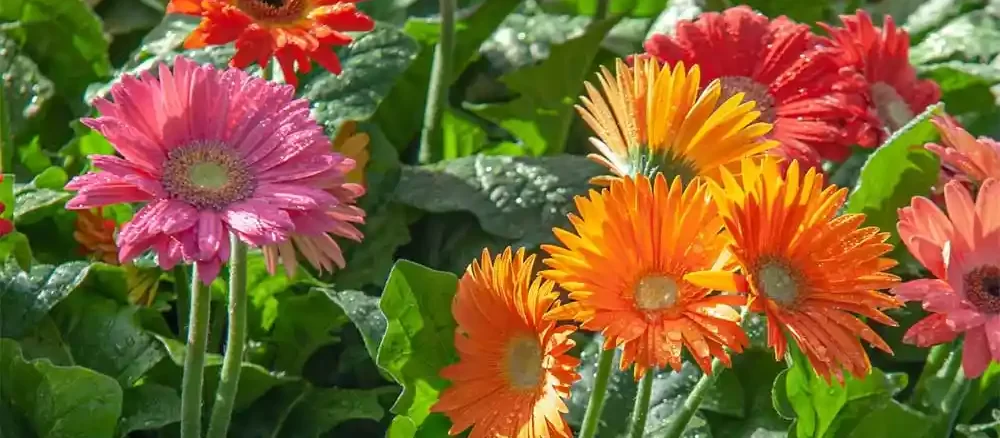
- Air-Purifying Properties: Known to filter benzene, formaldehyde, and trichloroethylene.
- Description: The Gerbera Daisy adds a pop of color with its bright, cheerful flowers.
- Care Tips: Requires plenty of sunlight and regular watering to thrive.
How to Choose the Right Air-Purifying Plant for Your Space
When selecting an air-purifying plant, consider the following factors to ensure you choose the best fit for your home:
- Light Conditions: Determine the level of light available in your space. Some plants thrive in low light, while others need bright, indirect sunlight.
- Care Requirements: Assess how much time and effort you’re willing to invest in plant care. Opt for low-maintenance varieties if you’re a beginner.
- **Space Availability:** Choose plants that fit well in your space without overcrowding.
- Pet Safety: Some air-purifying plants are toxic to pets, so always check before bringing a new plant into a household with animals.
Tips for Taking Care of Indoor Air-Purifying Plants
- Watering: Overwatering is a common mistake. Make sure to water only when necessary and check soil moisture before adding water.
- Fertilization: Feed your plants with a balanced fertilizer during the growing season to promote healthy growth.
- Cleaning: Dust the leaves regularly to ensure they can absorb pollutants effectively.
- Repotting: Repot your plants when they outgrow their containers to ensure continued healthy growth.
Common Mistakes to Avoid When Growing Indoor Plants
- Overwatering: One of the most frequent issues, leading to root rot and plant death.
- Lack of Light: Many plants need adequate light to thrive, so make sure they get the proper amount.
- Ignoring Pests: Regularly check your plants for signs of pests and treat infestations promptly.
- Wrong Soil Type: Using the wrong soil can hinder plant growth, so always use a well-draining mix suited to your plant’s needs.
Conclusion
Incorporating air-purifying plants into your home is more than just a trend; it’s a lifestyle choice that promotes a healthier living environment. These plants are not only beautiful additions to your decor but also work tirelessly to clean the air, making your indoor spaces more breathable and pleasant. Whether you start with just one plant or create an entire indoor garden, each step you take toward greener living has a positive impact on your well-being.
Frequently Asked Questions (FAQs)
Which indoor plant purifies the air the most?
The Peace Lily and Spider Plant are among the most effective in purifying the air.
How many indoor plants do I need to purify the air in my home?
NASA recommends at least one plant per 100 square feet of space for optimal air purification.
Are air-purifying plants effective in small spaces?
Yes, even in small spaces, plants can improve air quality significantly by absorbing pollutants.
Can indoor plants really remove toxins from the air?
Yes, many indoor plants have been scientifically proven to remove toxins and VOCs from the air.
Are these air-purifying plants safe for pets?
Not all plants are pet-friendly. Always check if a plant is toxic to pets before bringing it into a home with animals.
